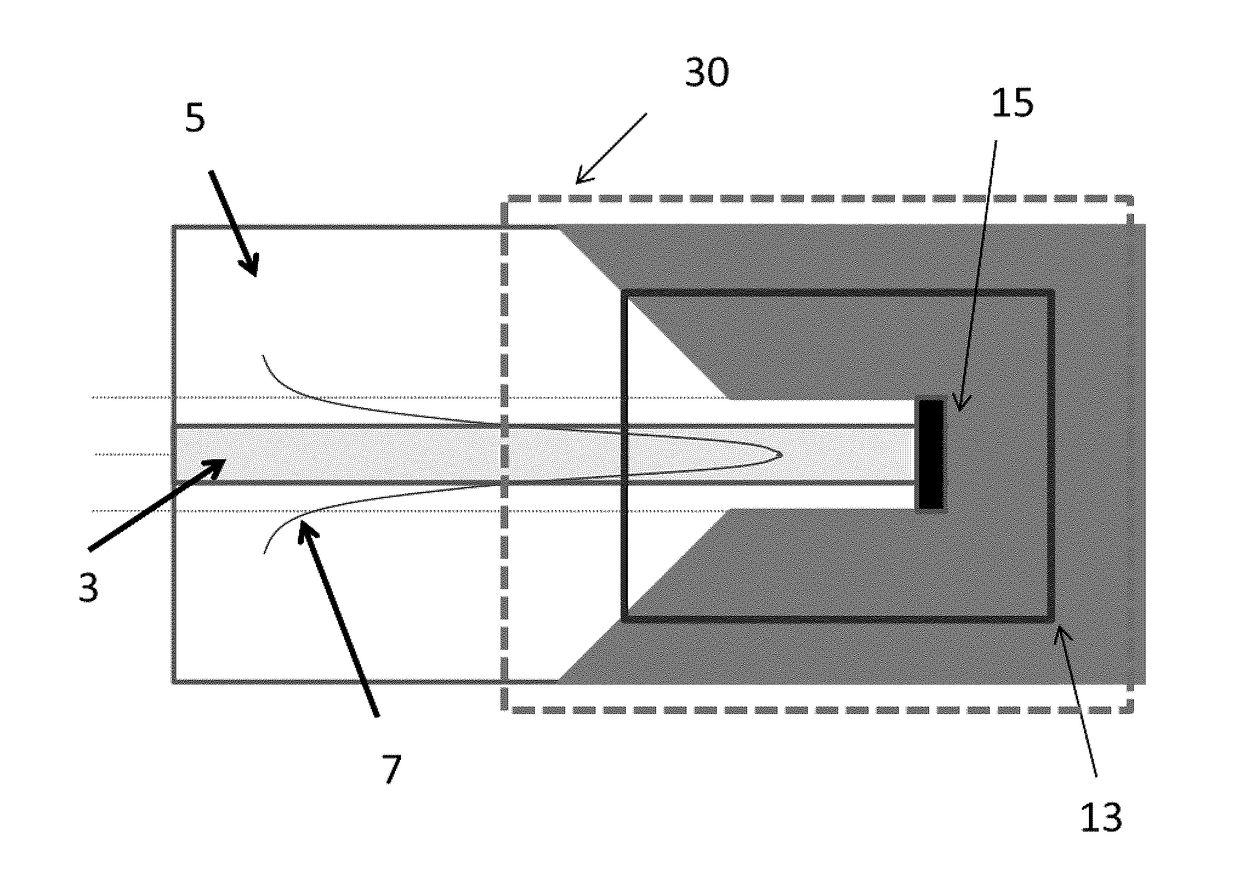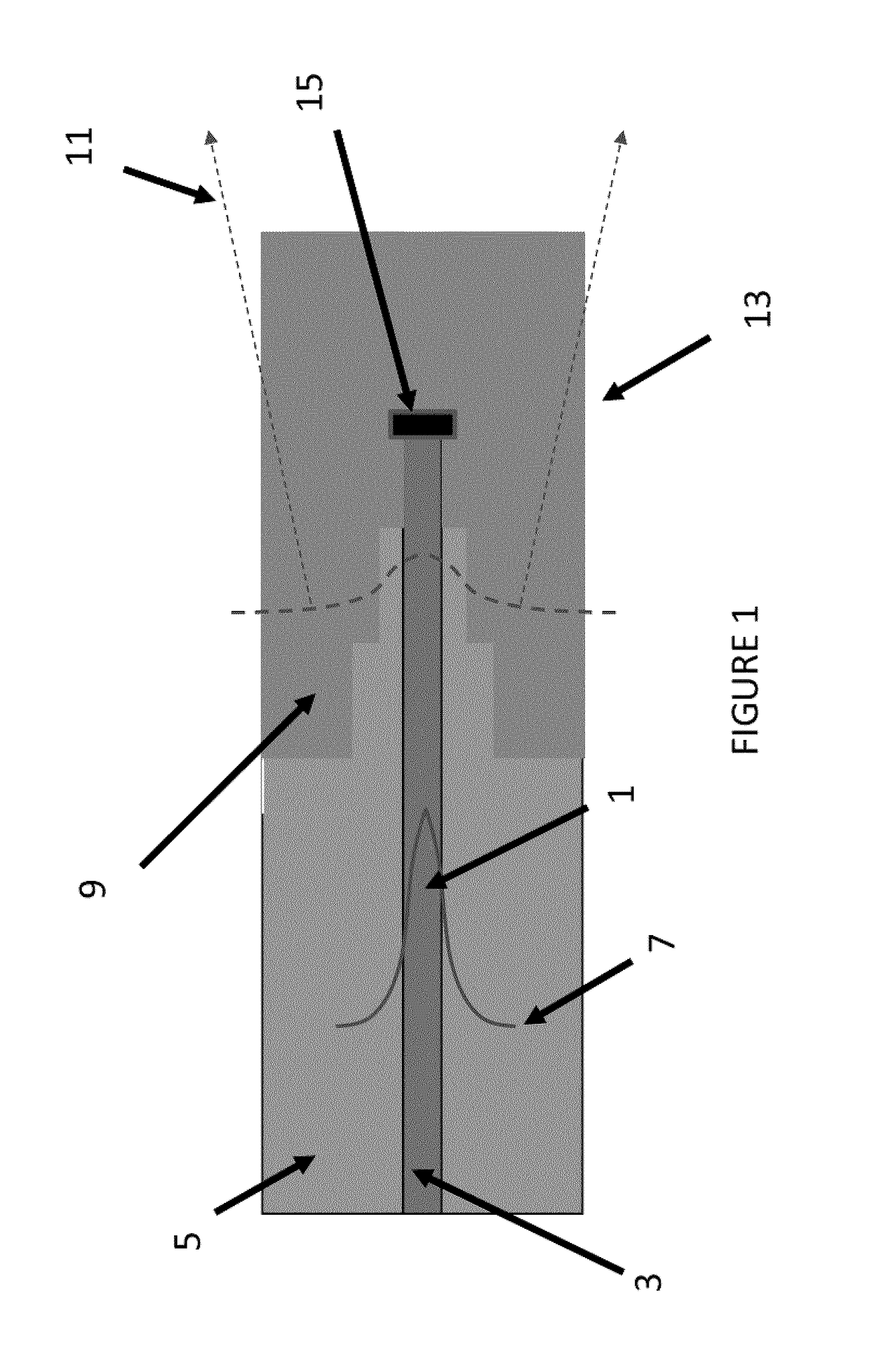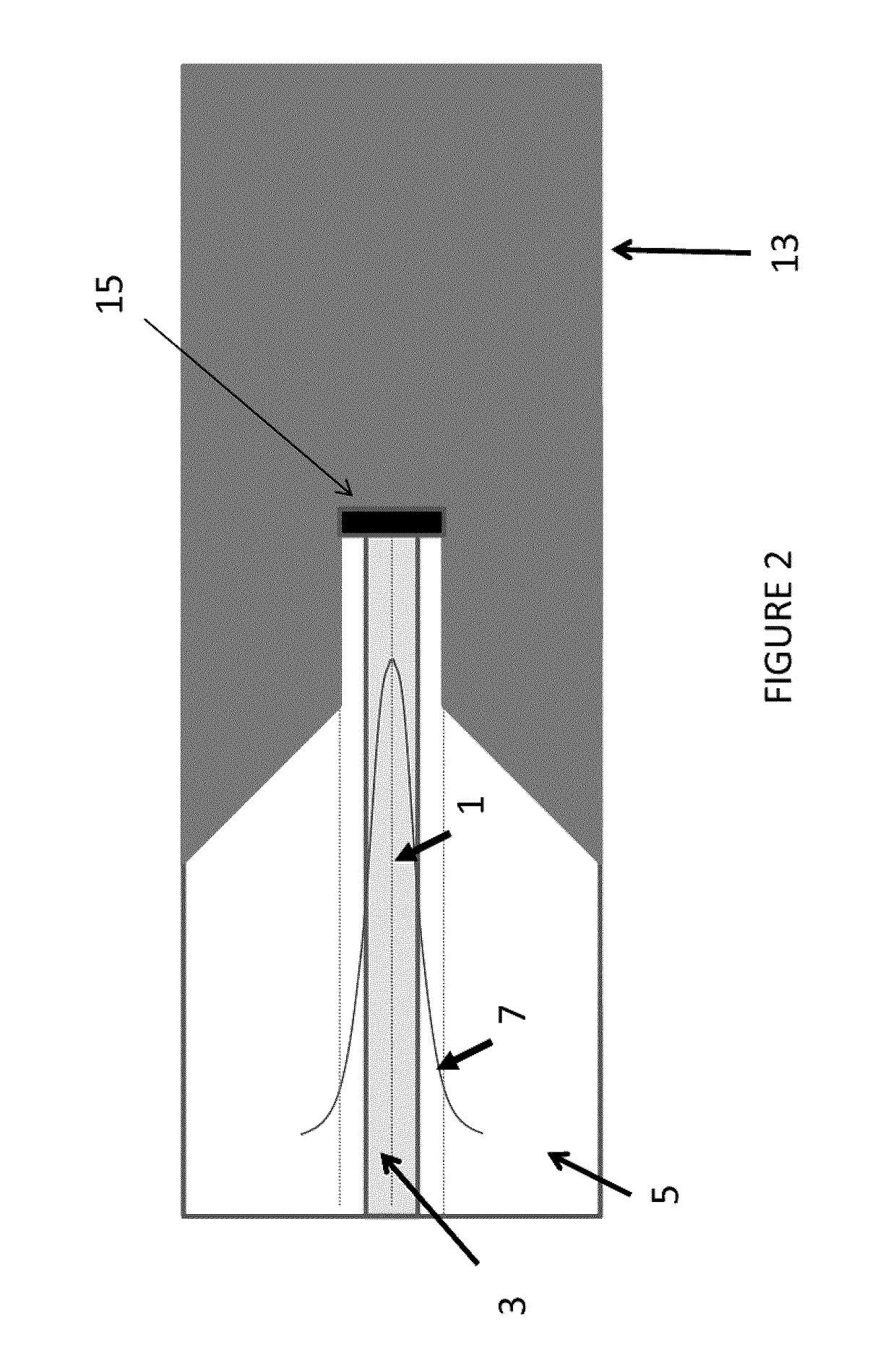Fiber-optic thermometer
- Summary
- Abstract
- Description
- Claims
- Application Information
AI Technical Summary
Benefits of technology
Problems solved by technology
Method used
Image
Examples
Embodiment Construction
[0029]The invention provides a fiber optic thermometer the functioning of which is based on the variation of the power of the light propagated within the fiber in response to changes in the refractive index of a temperature-dependent refractive index material. The fiber optic thermometer of the invention is simpler and cheaper to make than existing fiber optic thermometers and provides good temperature and spatial resolution.
[0030]The thermometer comprises an optic fiber based probe that is coupled to a light source and a photo detector. FIG. 1 provides a highly schematic diagram of an example of the fiber optic probe of the invention illustrating the working principle of the device. Light 1 is propagated within the core 3 of the fiber according to a certain mode or plurality of modes and the difference in the refractive index between the core and the cladding 5 (having a lower refractive index) provides an interface that reflects the light therefore allowing light propagation by to...
PUM
 Login to view more
Login to view more Abstract
Description
Claims
Application Information
 Login to view more
Login to view more - R&D Engineer
- R&D Manager
- IP Professional
- Industry Leading Data Capabilities
- Powerful AI technology
- Patent DNA Extraction
Browse by: Latest US Patents, China's latest patents, Technical Efficacy Thesaurus, Application Domain, Technology Topic.
© 2024 PatSnap. All rights reserved.Legal|Privacy policy|Modern Slavery Act Transparency Statement|Sitemap



